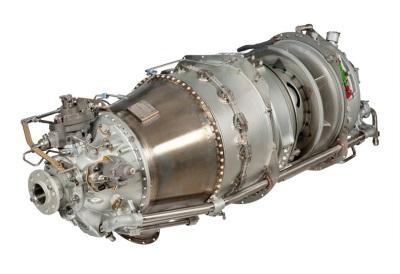Wed, Oct 22, 2014
Over 53,000 Engines Delivered Since 1963
Pratt & Whitney Canada's (P&WC) iconic PT6 engine family has reached the remarkable milestone of 400 million flight hours - well beyond any other gas turbine turboprop engine.

"This sort of achievement is simply unmatched in the general aviation industry," said Denis Parisien, Vice President, General Aviation, Pratt & Whitney Canada. "But beyond the numbers, beyond the milestone, is the engine's exceptional performance in various conditions, the value it delivers to operators and how its potential can be expanded even further. The PT6 offers unparalleled value and flexibility to address the multiple requirements our OEMs and operators need to perform a variety of missions. Additionally, P&WC's comprehensive global service and support network delivers the highest value aligned with our customers' operational and maintenance needs, 24/7/365 virtually anywhere in the world."
With over 53,000 engines delivered since 1963 - our PT6 has powered more than 140 different applications offering cost-effective and flexible options to the business and commercial transport, cargo hauling and aerial application operations, as well as aiding in deploying humanitarian aid and extinguishing forest fires. Today's PT6 is up to four times more powerful, has a 50 per cent better power-to-weight ratio and up to 20 per cent better specific fuel consumption compared to the original engine. Improvements throughout the years have allowed the engine to lead, never follow. As the engineering team expanded the engine's power and capabilities over the years, P&WC repeatedly created a new view as to what was possible.

"We are always looking at new opportunities to evolve our PT6 engine family. For instance, in addition to continuous Specific Fuel Consumption improvements, we are evaluating several options to address the demand for other variants of the engine. Reducing pilot workload is another priority. Although most of our operators find the PT6 engine easy to start and operate, we are actively pursuing an innovative electronic control system that would provide a simplified power management, while providing other key features to further reduce the workload on the pilot, provide engine protection and simplify diagnostic and prognostics," Parisien concluded.
(Image provided by Pratt & Whitney Canada)
More News
Light Gun A handheld directional light signaling device which emits a brilliant narrow beam of white, green, or red light as selected by the tower controller. The color and type of>[...]
"The journey to this achievement started nearly a decade ago when a freshly commissioned Gentry, driven by a fascination with new technologies and a desire to contribute significan>[...]
Aero Linx: JAARS, Inc. For decades now, we’ve landed planes on narrow rivers and towering mountains. We’ve outfitted boats and vehicles to reach villages that rarely se>[...]
"Our driven and innovative team of military and civilian Airmen delivers combat power daily, ensuring our nation is ready today and tomorrow." Source: General Duke Richardson, AFMC>[...]
Aircraft Conflict Predicted conflict, within EDST of two aircraft, or between aircraft and airspace. A Red alert is used for conflicts when the predicted minimum separation is 5 na>[...]
 ANN's Daily Aero-Term (04.20.24): Light Gun
ANN's Daily Aero-Term (04.20.24): Light Gun Aero-News: Quote of the Day (04.20.24)
Aero-News: Quote of the Day (04.20.24) ANN's Daily Aero-Linx (04.21.24)
ANN's Daily Aero-Linx (04.21.24) Aero-News: Quote of the Day (04.21.24)
Aero-News: Quote of the Day (04.21.24) ANN's Daily Aero-Term (04.21.24): Aircraft Conflict
ANN's Daily Aero-Term (04.21.24): Aircraft Conflict




